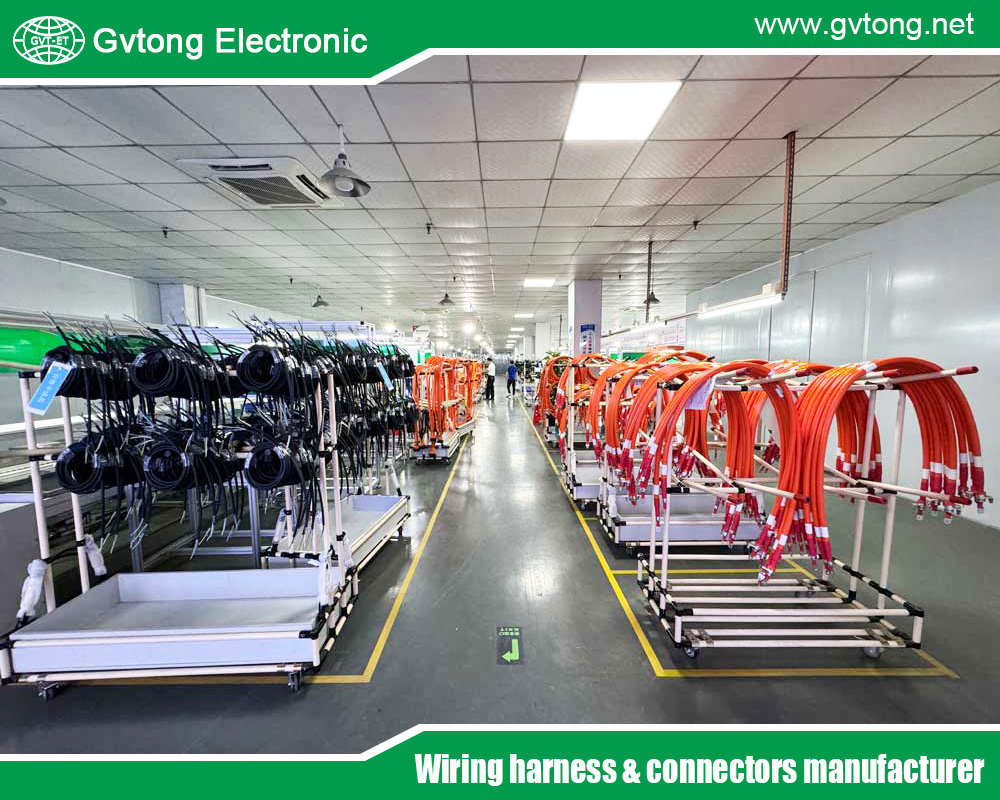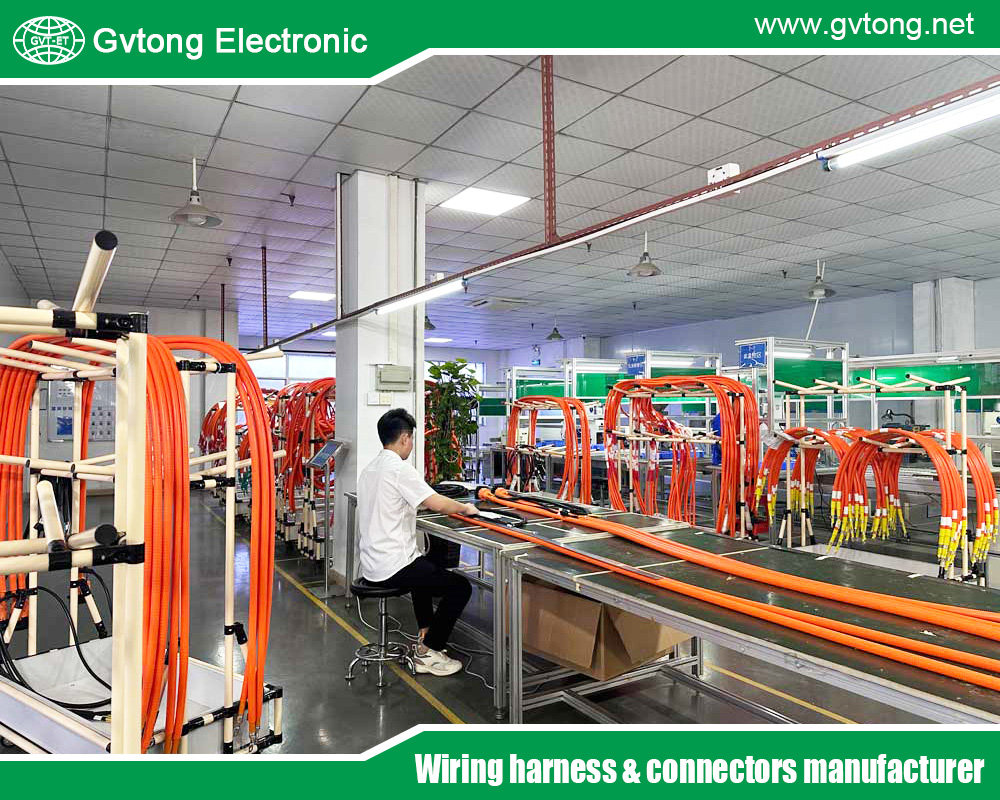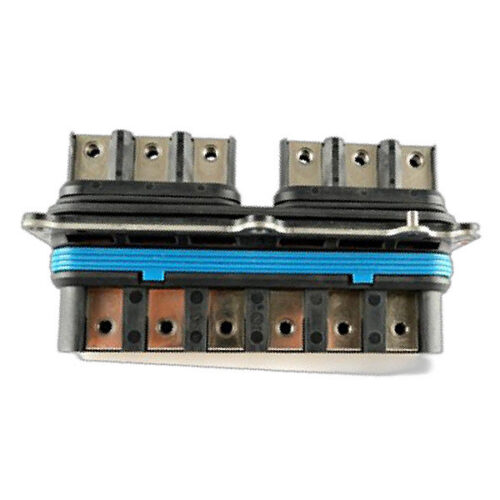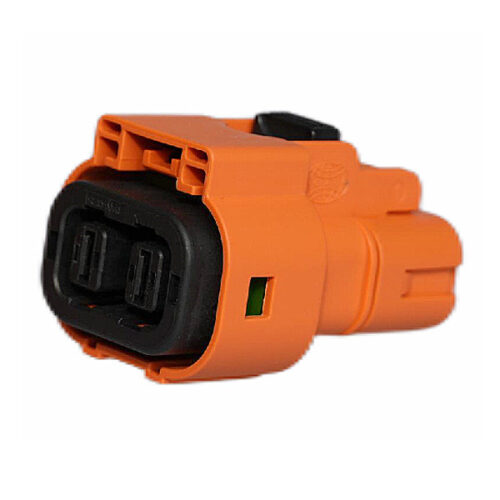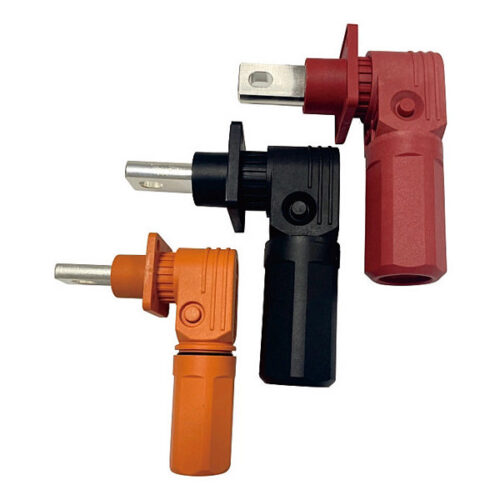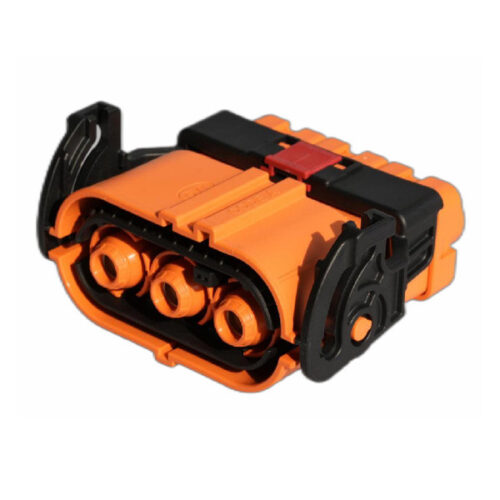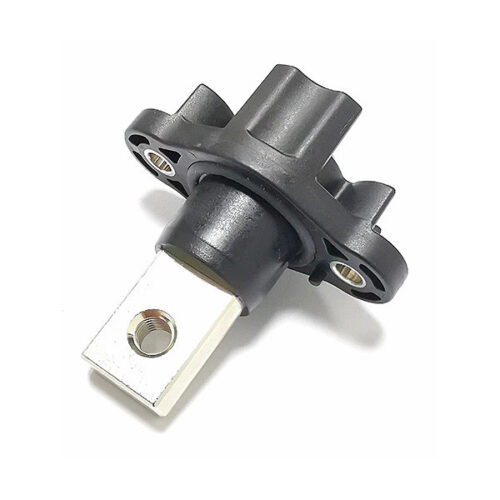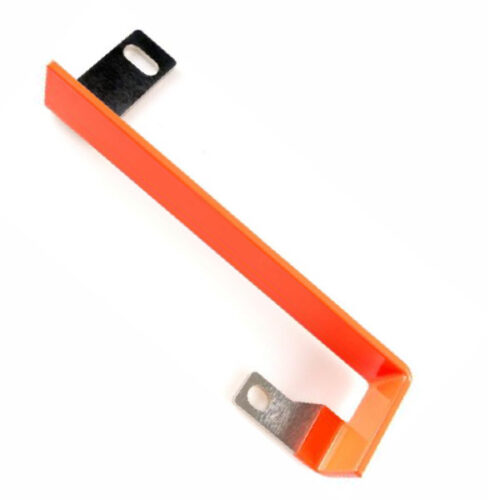Blogs & News
We are focus on automotive wiring harness & connectors technology.
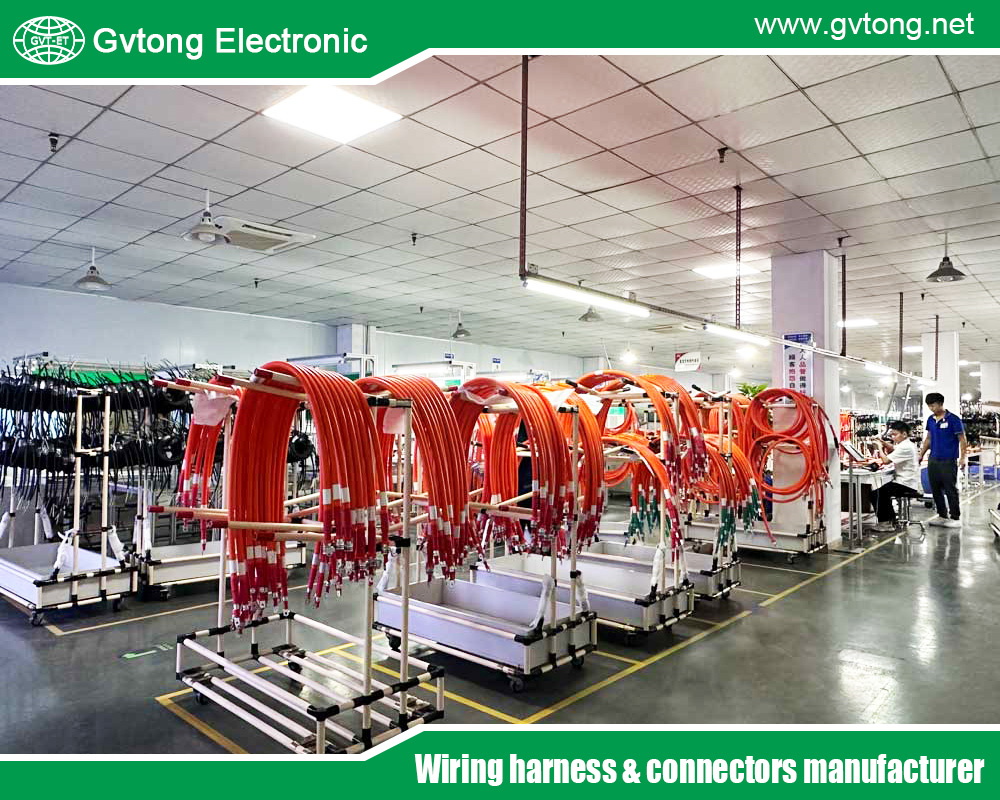
The Application and Advantages of Six-Cavity Connectors in Complex Systems
- Gvtong Electronic
- 48V board net connectors, 6-cavity connectors, ADAS sensor connectors, Automotive antenna connectorAutomotive power distribution connector, automotive coaxial connector, automotive data connector, automotive diagnostic connector, Automotive high - frequency connector, automotive High voltage connector, automotive hybrid connector, automotive optical fiber connector, Automotive temperature - resistant connector, Automotive vibration - resistant connector, Automotive-grade AEC-Q200 connectors, Battery management system (BMS) connectors, Blind-mate automotive connectors, EV charging connectors, Fuel cell connectors, In-cabin infotainment connectors, Lightweight automotive connectors, Modular automotive connectors, OEM-specific connectors, Pre-charge/discharge connectors, Quick-fit automotive connectors, six-cavity connectors, six-cavity connectors factory, six-cavity connectors manufacturer, six-cavity connectors supplier, Thermal management connectors, V2X communication connectors, Wireless charging connectors
- No Comments
The Application and Advantages of Six-Cavity Connectors in Complex Systems
With the rapid development of modern technology, various complex systems such as industrial automation production lines, high-end medical equipment, and aerospace electronic systems have continuously emerged. These systems consist of numerous components and require complex signal, data, and power transmission. As a key component for achieving reliable connections and effective communication between system components, the performance of connectors directly affects the overall operation of complex systems. Six-cavity connectors stand out in complex systems due to their unique structure and excellent performance, playing an indispensable role.
Structure and Principle of Six-Cavity Connectors
Basic Structure
A six-cavity connector typically consists of a housing, six independent cavities, and internal contact elements. The housing is usually made of high-strength, corrosion-resistant materials such as engineering plastics or metal alloys, providing physical protection for internal components against external impacts, vibrations, and chemical corrosion. Each cavity is precisely designed to accommodate specific types of contact elements, which can be signal-transmitting pins or power-transmitting terminals. These contact elements are accurately positioned within the cavities to ensure stable and reliable connections.
Working Principle
Its working principle is based on the fundamental principle of electrical connection, achieving signal or power transmission through close contact between contact elements. When the male and female connectors are mated, the contact elements in each cavity cooperate with each other to form an electrical path. In signal transmission, it utilizes the conduction characteristics of electrical signals in metal conductors to transmit digital or analog signals from one component to another. In power transmission, it relies on the good electrical conductivity of contact elements to provide a stable power supply for devices, meeting the power requirements of different components.
Application Scenarios of Six-Cavity Connectors in Complex Systems
Industrial Automation
In industrial automation production lines, every link—from sensors acquiring physical quantity data (such as temperature, pressure, position, etc.) on the production line to controllers precisely regulating the production process and actuators completing corresponding actions according to instructions—requires reliable connections. Six-cavity connectors can be used to connect programmable logic controllers (PLCs) with distributed I/O modules, enabling fast and accurate transmission of large quantities of digital and analog signals. They can also connect servo motors with drives, providing power to the motors and transmitting control signals to ensure precise motor operation and the efficient and stable operation of the production line.
Medical Equipment
Medical equipment has extremely high requirements for reliability and safety, as it is related to patients’ lives and health. In medical imaging equipment such as magnetic resonance imaging (MRI) systems, six-cavity connectors are used to connect different imaging components, including radiofrequency coils and gradient amplifiers, to achieve high-speed transmission of image data and collaborative operation of components, providing doctors with clear and accurate imaging diagnostic evidence. In life support equipment such as ventilators in intensive care units, six-cavity connectors connect gas flow sensors, pressure controllers, and electrical control systems to ensure stable equipment operation and provide continuous and precise respiratory support for patients.
Aerospace
Aerospace electronic systems face extreme working environments such as high radiation, strong vibration, and high-low temperature cycling, placing strict demands on the performance of connectors. In the avionics systems of aircraft, six-cavity connectors are used to connect critical components such as flight control systems, navigation systems, and communication systems. They connect the control sticks of flight control systems with flight computers, quickly and accurately transmitting pilots’ operation commands to the computers to achieve precise control of aircraft attitude. They also connect satellite communication antennas with communication terminals to ensure stable and high-speed data communication between aircraft and ground control centers, ensuring flight safety and mission execution.
Advantages of Six-Cavity Connectors in Complex Systems
Signal Transmission Advantages
- Multi-Channel Parallel Transmission: The six-cavity design enables the connector to transmit multiple types of signals simultaneously, such as digital signals, analog signals, and differential signals, meeting the multi-parameter and multi-task data transmission requirements of complex systems. In industrial automation systems, one cavity can transmit digital signals of equipment operating status, while another can transmit analog signals collected by sensors, improving the system’s data processing efficiency and response speed.
- Strong Anti-Interference Capability: Each cavity is relatively independent, effectively reducing crosstalk between signals. Through reasonable shielding design and grounding measures, it can resist external electromagnetic interference and ensure the stability and accuracy of signal transmission. In the complex electromagnetic environment of operating rooms in medical equipment, six-cavity connectors can ensure that medical signals are not interfered with by other equipment, guaranteeing the reliability of diagnosis and treatment.
Mechanical Performance Advantages
- High Connection Strength: It typically adopts robust mechanical connection methods such as threaded connections or bayonet connections, ensuring that the connector remains tightly connected and not easily loosened in harsh environments with vibrations and impacts. In the aerospace field, aircraft experience strong vibrations and impacts during takeoff, flight, and landing. The high connection strength of six-cavity connectors ensures reliable connections between components of electronic systems, safeguarding flight safety.
- Good Plugging Durability: Through special design and process treatment, it has a high plugging life, meeting the frequent plugging and unplugging needs in complex systems. During the maintenance and upgrading of industrial equipment, connectors need to be frequently plugged and unplugged. The good plugging durability of six-cavity connectors reduces equipment maintenance costs and improves equipment availability.
Environmental Adaptability Advantages
- Excellent Temperature Resistance: It can operate normally within a wide temperature range, with no significant changes in its materials and performance from low-temperature to high-temperature environments. In the aerospace field, aircraft experience extremely low temperatures at high altitudes and high temperatures when re-entering the atmosphere. The excellent temperature resistance of six-cavity connectors ensures stable operation under different temperature conditions.
- Good Dust and Water Resistance: Through sealing design and the application of protective materials, it achieves high protection levels such as IP67 or IP68, effectively preventing dust, moisture, and other pollutants from entering the interior and affecting its performance. In outdoor industrial equipment or underwater detection equipment, the dust and water resistance of six-cavity connectors enables them to adapt to harsh natural environments and ensure equipment normal operation.
Space Utilization Advantages
- Integrated Design: Integrating multiple connection functions into a single connector reduces the number of connectors and wiring complexity in the system, saving installation space. In miniaturized medical equipment, the integrated design of six-cavity connectors helps achieve compact equipment layouts, improving portability and practicality.
- Convenient Wiring and Maintenance: The unified interface and standardized wiring of six-cavity connectors make system wiring neater and more organized, facilitating installation, debugging, and later maintenance. When system failures occur, faulty connectors can be quickly located and replaced, reducing maintenance difficulty and time costs.
Challenges and Development Trends
Challenges Faced
- Cost Issues: Due to its complex structure and high-precision manufacturing processes, the manufacturing cost of six-cavity connectors is relatively high, which limits their promotion in cost-sensitive application scenarios to a certain extent.
- Technical Compatibility: When connecting with equipment and components from different manufacturers, there may be compatibility issues in interface standards and signal protocols, requiring further strengthening of industry standard unification and technical coordination.
Development Trends
- Miniaturization and Lightweighting: As complex systems develop toward miniaturization and lightweighting, six-cavity connectors will also be improved toward smaller sizes and lighter weights to meet strict requirements for space and weight in equipment.
- High-Speed and High-Frequency Development: To adapt to large-data transmission and high-speed communication needs, six-cavity connectors will continuously improve signal transmission speed and frequency to meet the application requirements of 5G, 6G communications, and high-speed data processing systems.
- Intelligentization: Future six-cavity connectors may integrate intelligent components such as sensors to achieve real-time monitoring and self-diagnosis of connection status, temperature, humidity, and other parameters, improving system reliability and intelligence levels.
Conclusion
Six-cavity connectors demonstrate multiple advantages in complex systems due to their unique structure and superior performance, and are widely used in many fields such as industrial automation, medical equipment, and aerospace, becoming key components to ensure the stable operation of complex systems. Despite facing challenges such as cost and compatibility, their development trends in miniaturization, high-speed operation, and intelligentization indicate that six-cavity connectors will play a more important role in future technological development, driving continuous upgrades and innovations in complex systems across various fields.
For more about the application and advantages of six-cavity connectors in complex systems, you can pay a visit to Gvtong at https://www.gvtong.net/ for more info.

